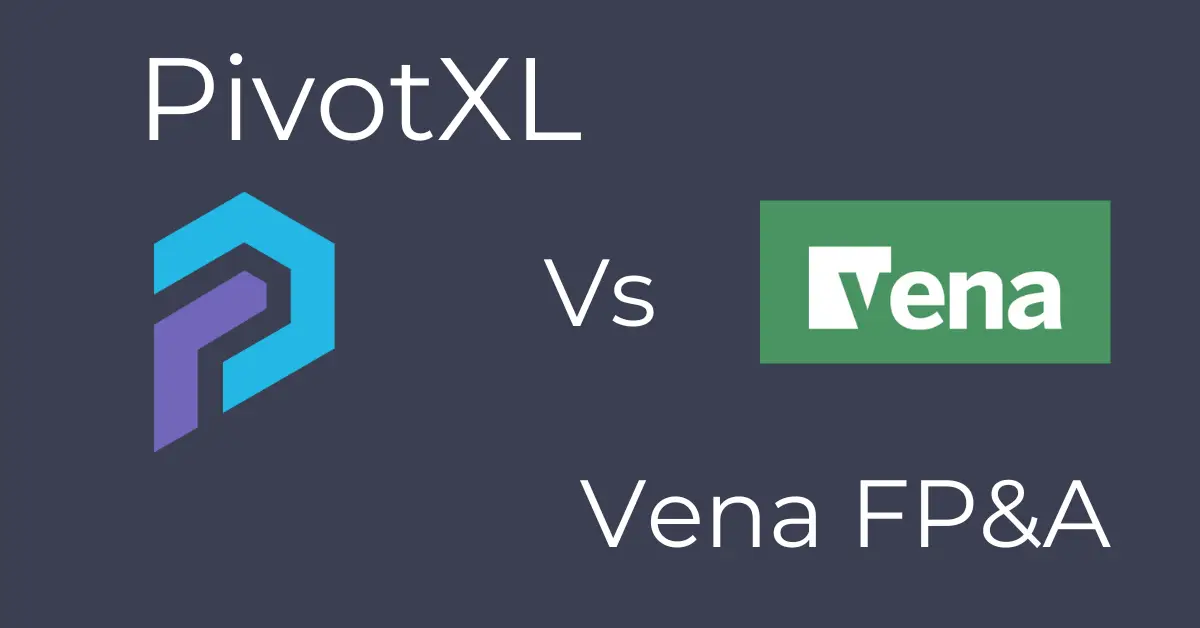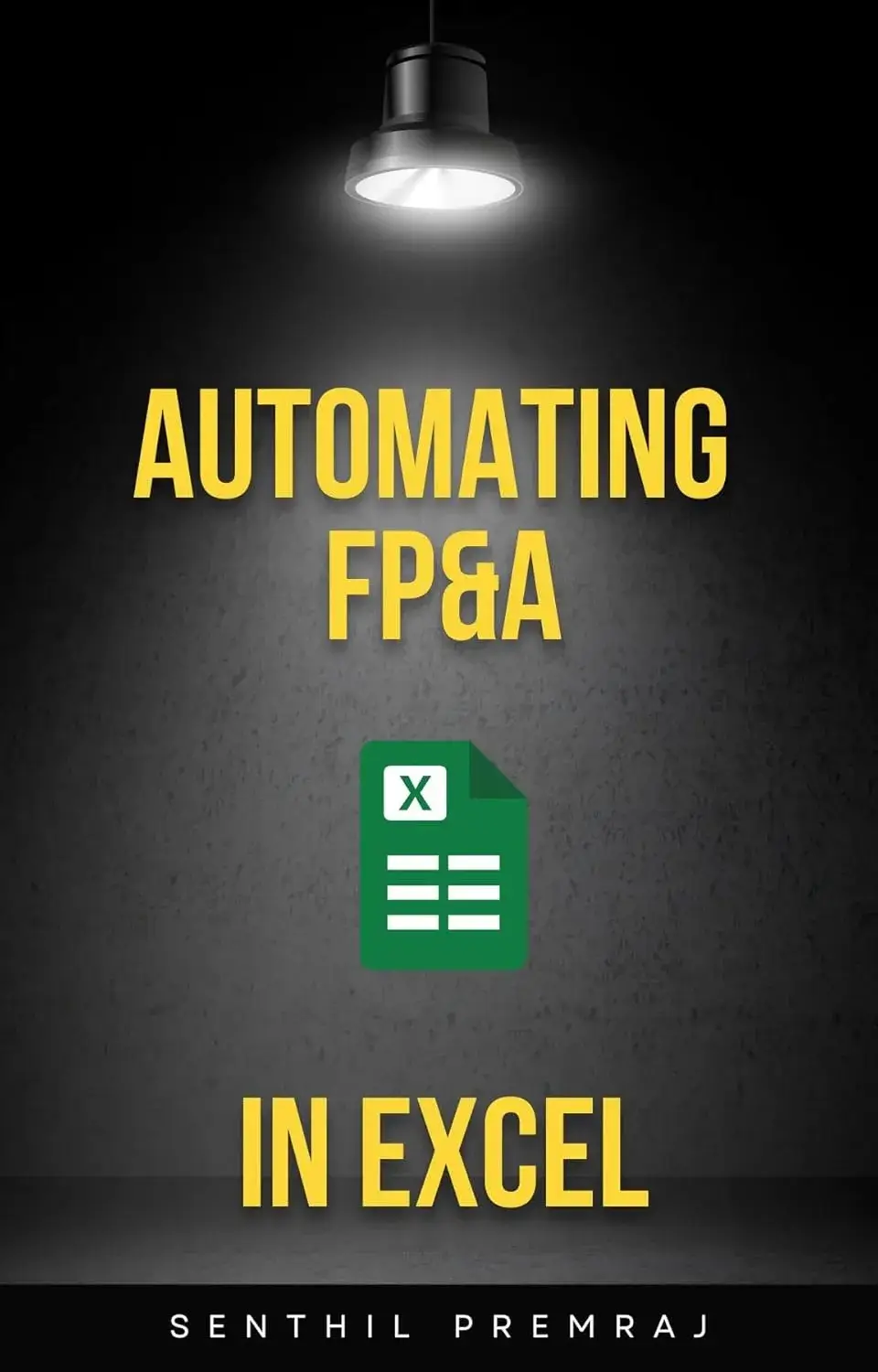The FP&A landscape has evolved dramatically in 2025, with over 150 vendors competing for attention. Among these, only a select few provide Excel-based FP&A alternatives. Recently, PivotXL has gained significant traction as a simpler and more affordable solution with comparable features. In this article, you will learn about PivotXL and Vena FP&A —their strengths and weaknesses and which might be the best choice for your team.
What You Will Learn
- The Shared Strength: Excel Integration
- Ease of Use
- Cost-Effectiveness
- Advanced Features
The Shared Strength: Excel Integration
Both PivotXL and Vena FP&A understand the power of Excel. They enhance Excel’s familiar interface, enabling finance teams to work efficiently while accessing advanced features. This integration is particularly valuable for FP&A professionals who rely on Excel’s formulas, pivot tables, and data manipulation features for budgeting, forecasting, and reporting.
However, the similarities end there. PivotXL takes simplicity and accessibility to the next level, whereas Vena’s broader feature set often comes at the cost of complexity and a steeper learning curve.
Key Differences:
1. Ease of Use
- PivotXL: Designed with simplicity at its core, PivotXL offers an intuitive interface that minimizes the need for extensive training. Users can get started quickly without being bogged down by intricate setups or configurations.
- Vena FP&A: While Vena integrates with Excel, some users report that even with advanced Excel expertise, they find the system challenging to navigate. In contrast, PivotXL is designed to be intuitive and easy to use for anyone familiar with Excel.

2. Implementation and Scalability
- PivotXL: With its straightforward setup, PivotXL ensures rapid implementation. It’s particularly suitable for small to medium-sized businesses (SMBs) and growing teams that need a solution up and running in weeks, not months.
- Vena FP&A: Vena’s implementation process has, however, faced frequent criticism. For instance, several users have reported that the implementation time extended to over 8 months, significantly exceeding the initially promised 2-month timeline. As a result, this discrepancy has raised concerns about potential project delays and unmet expectations.

3. Cost-Effectiveness
- PivotXL: Pricing starts at $100/month, which is much more palatable to small to medium-sized companies. It offers a leaner feature set focused on core FP&A needs, making it a cost-effective choice for organizations looking to maximize ROI without paying for unnecessary extras.
- Vena FP&A: Vena starts at $2,000 per month and often emphasizes long-term contracts, making it more suitable for larger organizations with extensive needs. In contrast, PivotXL offers a simpler and more flexible contract structure, making it an ideal choice for small to medium-sized businesses seeking affordability and ease of use.
3. Advanced Features
PivotXL provides advanced capabilities for uploading transaction data and importing custom outputs directly from source systems. These features ensure seamless data integration, enabling finance teams to efficiently manage and analyze their financial data while maintaining accuracy and consistency.
- Custom Tables and Filters: Simplify transactional data slicing and dicing for better analysis.
- Custom Scripts: Automate complex tasks for greater efficiency using Ruby scripts.
- PowerPoint Integration: Seamlessly create presentations directly from your data.
- Task Management: Advanced task management functionality streamlines budgeting and month-end close processes.
Why Choose PivotXL in 2025?
As FP&A tools evolve, there’s a growing preference for tools that are simple, effective, and easy to adopt. PivotXL embodies these qualities, making it an ideal choice for businesses that value agility and user-friendliness over exhaustive feature sets. By focusing on what matters most—streamlined workflows, quick implementation, and cost efficiency—PivotXL stands out as a modern solution for FP&A in 2025.
On the other hand, Vena remains a strong contender for organizations with complex needs and the resources to manage its implementation and training requirements. However, for many teams, PivotXL’s simplicity and clarity make it the superior choice.
Vena vs PivotXL: A Detailed Comparison
| PivotXL | Datarails | Benefits | |
| Storing Data in Cubes | Yes | Yes | Multi-dimensional cubes store data in a highly efficient manner, enabling seamless organization and retrieval. These cubes simplify the process of comparing budgets with actuals while allowing finance teams to analyze data from multiple angles, such as time, departments, or product categories, providing deeper insights for decision-making. |
| Excel Add-In (GET/SEND Data) | Yes | Yes | Excel (Send/Get Data) functionality allows you to seamlessly pull data from cubes into Excel and send updates back to the cubes. This feature enables you to use the data for reporting, analysis, and calculations within the familiar Excel environment, streamlining workflows and enhancing efficiency. |
| Excel Reporting | Yes | Yes | Managers often prefer clean, well-formatted Excel reports for clear and professional communication. Excel add-ins make this process effortless by allowing you to pull data directly from source systems or cubes, apply custom formatting, and share reports seamlessly. This ensures consistency, accuracy, and efficiency in report generation and distribution. |
| Excel as calculation engine | Yes | Yes | Excel excels at handling calculations thanks to its intuitive formula and function capabilities. Furthermore, you can easily pull data from a database, apply formulas for in-depth analysis or computation, and subsequently send the results back to the database. This ensures a seamless, efficient workflow for both data processing and reporting, enhancing productivity and accuracy in financial and operational tasks. |
| Audit Trails | Yes | No | Databases efficiently track changes whenever data is sent, thereby providing a clear and comprehensive audit trail. This feature shows who made changes, when, and what updates occurred. Consequently, it ensures transparency, promotes accountability, and safeguards data integrity throughout the process. |
| Sharable Web Dashboards | Yes | Yes | Create web dashboards to visualize and analyze data seamlessly. Moreover, these dashboards support real-time collaboration, which allows teams to work together effortlessly without relying on external tools. As a result, workflows are streamlined, and productivity is significantly enhanced. |
| Consolidated Data – Upload | Yes | Yes | Import datasets, such as trial balances, with ease using intuitive tools that handle various file formats seamlessly. These tools simplify data uploads, ensuring flexibility and efficiency while accommodating the diverse data management needs of finance teams. |
| Transaction Data – Upload | Yes | No | Break transaction data into smaller, more manageable chunks using filters like dates or keywords. This process allows you to upload and reorganize raw data efficiently, enabling better analysis by focusing on relevant subsets of information and uncovering insights more effectively. |
| Custom Script – Upload | Yes | No | Use scripts to manage complex data exports efficiently. These scripts automate the preparation and formatting of data, ensuring it is accurately uploaded into the database. This seamless process saves time, reduces errors, and enhances overall data management workflows. |
| API Based Import | Yes | Yes | APIs are essential for automating data access, enabling seamless communication between systems. However, while some platforms may lack custom APIs, the available ones still play a significant role in simplifying workflows. Consequently, they help reduce manual effort, save time, and enhance overall efficiency in data management processes. |
| Web Calculation Engine | Yes | No | Create calculations for management reports either directly within the system or by using Excel templates. This dual approach allows you to select the method that best fits your workflow. By using built-in system tools, you can ensure seamless integration, while Excel templates offer a familiar and highly customizable option for tailored reporting needs. |
| Template Storage | Yes | Yes | Store Excel templates directly within the application for easy access and better organization. This approach ensures that templates remain centralized, searchable, and readily available for users, streamlining workflows and reducing the time spent locating the right files. |
| User Management | Yes | Yes | Admins have the ability to set tasks and manage calculations, ensuring the system operates efficiently and aligns with organizational goals. Meanwhile, basic users are granted access to limited functions, maintaining a clear structure and enhancing security by preventing unauthorized changes or access to critical operations. |
| Roll-Ups Definition | Yes | Yes | Define how to consolidate and roll up data using simple interfaces. Combine sources without writing complex formulas. |
| Drill Down Data | Yes | Yes | Start with a high-level view of data. Drill down into categories or transactions to see detailed information. |
| Task Management | Yes | No | Organize workflows with task management. Track progress, assign accountability, and collaborate in real-time. |
| Draft Task – Budgeting Process Management | Yes | No | Automate budgeting with notes and calendars. Streamline the process and save time on repetitive tasks. |
| Recurring Task – automate month end close checklist | Yes | No | Automate monthly close tasks. Track progress, ensure accountability, and simplify reviews with recurring checklists. |
| Powerpoint Integration | Yes | No | Create PowerPoint templates. Generate presentations quickly with pre-filled data, saving time and effort. |
| Advanced Excel to Cube mapping features | Yes | No | Map Excel data to cubes through cell or bulk mapping. Add rows and columns to handle complex data needs. |
| Advanced Automated-Excel Editing Features | Yes | No | Hide empty rows in Excel automatically. Keep tables dynamic and focus on relevant data without manual cleanup. |
| Free Proof Of Concept | Yes | No | We understand your needs and show tailored solutions. Our proof of concept highlights the system’s value to your business. |
| Pricing – Starts $100+/Month | Yes | No | Our pricing starts at $100/month. We offer cost-efficient, high-value solutions compared to others starting at $2,000/month. |
Conclusion
Both PivotXL and Vena have their merits, but the choice ultimately depends on your organization’s needs. If you’re looking for a straightforward, Excel-based FP&A tool that empowers your team without overwhelming them, PivotXL is the way forward. In 2025, as simplicity and speed become paramount, PivotXL’s focused approach positions it as the go-to solution for modern FP&A teams.




